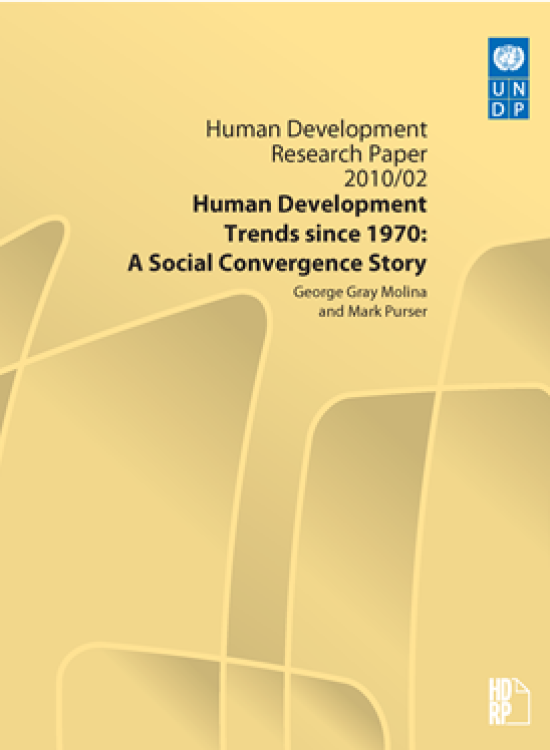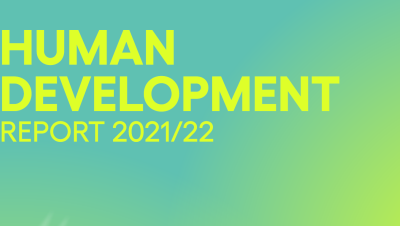Human Development Trends since 1970
A Social Convergence Story

Download Report by Language
Document
hdrp201002.pdf
(1.26 MB)
Citation
Molina, George Gray, Purser, Mark. 2010. Human Development Trends since 1970: A Social Convergence Story. New York.
Human Development Trends since 1970
A Social Convergence Story
Posted on: January 01, 2010
This paper uses a unique data set of the Human Development Index to describe long-run human development trends for 111 countries, from 1970 to 2005. The first part of the paper shows trends by region, period and index subcomponent. We find that 110 of the 111 countries show progress in their HDI levels over a 35-year period. HDI growth is fastest for low-HDI and middle-HDI countries in the pre-1990 period. The life-expectancy and education subcomponents grow faster than income. The assessment of HDI progress is sensitive to choice of measurement. The second part of the paper focuses on the differences between income and non-income determinants of human development. First, HDI growth converges, both absolutely and conditionally, when running HDI growth rates on initial levels of HD. Second, we find that the income and non-income components of HDI change have a near-zero correlation. Third, we look at determinants of the non-income components of the HDI. We find that income is not a significant determinant of HDI change once we include urbanization, fertility and female schooling. Fourth, we test the effects of institutions, geography and gender on HDI growth. We find that the most robust predictors of HDI growth are fertility and female schooling. We check this result using years of women’s suffrage as an instrument for changes in gender relations, and find that it is a significant predictor of HDI progress for the whole sample.

